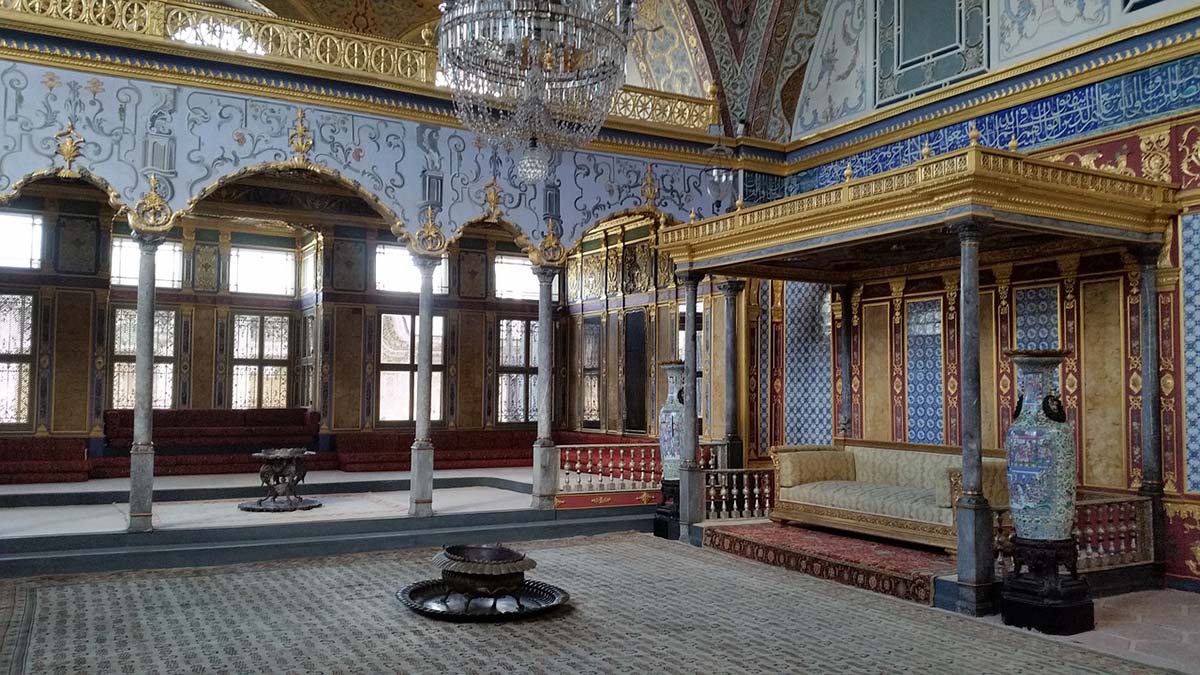
Istanbul, Turkey
by Norman A. Rubin
As visitors to Turkey course their way through the Grand Seraglio, the immense fortress of the Ottomani Sultans (now a museum) at Istanbul along the Sea of Marmara and the Golden Horn, they listen to the faint echoes of past centuries of greatness. The echoing sounds then lead them along the passage through an important crossroad into the signs of the faith – Judaism, Islam and Christianity. These signs of faith have left an indelible mark in the course of human history.
Turkey has a magnificent past, which is displayed throughout the land – graceful aqueducts build by the Romans, caravansaries dating back to Seljuk Empire of the 11th century, archaeological sites such as Troy, Pergamum, Ephesus, Miletas, Perga, etc.. The hinterland shows glimpses of other ancient civilizations – the Hittites, the Khatti, the Phyrygians, the Lydians… and the signs of faith.
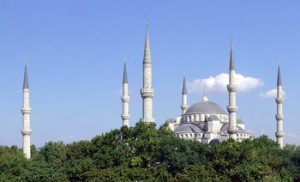 The route of faith starts at Haran (Harran). The Bible records that there the Patriarch Abraham came into Canaan from Harran. Abraham sent his servant back to the region of Haran to find a wife for Isaac (Genesis 24:10) and where Jacob spent a score of years. There in that town, Terah, father of Abraham, found his final resting place. “But when they reached Harran, they settled there…” (Gen 11:30-31) Biblical mentions of the Hebrew population in Turkey are numerous: Icononium (present day Konya) is mentioned as having a synagogue in Acts 14:1, and Ephesus is mentioned as having a Synagogue in Acts 19:1:1, etc. Note: Harran is located 10 miles north of the Syrian border along the Balikh River, a tributary of the Euphrates River.
The route of faith starts at Haran (Harran). The Bible records that there the Patriarch Abraham came into Canaan from Harran. Abraham sent his servant back to the region of Haran to find a wife for Isaac (Genesis 24:10) and where Jacob spent a score of years. There in that town, Terah, father of Abraham, found his final resting place. “But when they reached Harran, they settled there…” (Gen 11:30-31) Biblical mentions of the Hebrew population in Turkey are numerous: Icononium (present day Konya) is mentioned as having a synagogue in Acts 14:1, and Ephesus is mentioned as having a Synagogue in Acts 19:1:1, etc. Note: Harran is located 10 miles north of the Syrian border along the Balikh River, a tributary of the Euphrates River.
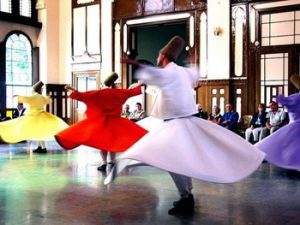 We are all familiar with Mt. Ararat in Eastern Turkey where, according to written tradition of the Old Testament Noah’s ark landed there after the great flood. But, how many people are aware that Turkey was the birthplace of St. Nicholas or Santa Claus? Saint Nicholas was the Bishop of Myra (now Demre-Kale) who lived in AD 300. He was extremely kind and went out at night, taking presents to the needy. Afterwards his fame spread, and over the years it turned into that merry old gentleman associated with Christmas.
We are all familiar with Mt. Ararat in Eastern Turkey where, according to written tradition of the Old Testament Noah’s ark landed there after the great flood. But, how many people are aware that Turkey was the birthplace of St. Nicholas or Santa Claus? Saint Nicholas was the Bishop of Myra (now Demre-Kale) who lived in AD 300. He was extremely kind and went out at night, taking presents to the needy. Afterwards his fame spread, and over the years it turned into that merry old gentleman associated with Christmas.
Tarsus in south-central Turkey was the birthplace of the Apostle Paul; Antioch (Antakyah) is the site where the followers of the Lord were first called Christians; here Paul and Barnabas were sent on their first mission. Cappadocia (Goreme), in the center of the country, is where the early Christians took refuge from the forces of Roman Empire. And in the small town of Pamukkale (Hierapolis) is the site of the martyrdom of St. Phillip.
St. Sophia Museum in Istanbul is one of the most important monuments of all time. The basilica, built by Emperor Constantine the Great and reconstructed by Emperor Justinian is one of the architectural marvels of the world. The Chora (Kariya), situated nearby, is another important Byzantine monument; the 11th century church’s and mosaics are superb and a sight to behold. The St. Sophia cathedral (now a museum) at Iznik (Nicaea) was the seat of the first (325 AD) and seventh (787AD) ecumenical councils.
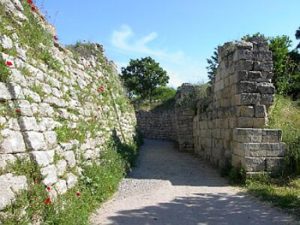 Selçuk (present day Izmir) is one of the most visited tourist destinations in Turkey, known for its nearness to the Ephesus, House of the Virgin Mary and Seljukian works of art. On the other hand you can see Basilica of St. John, Ephesus Museum, Isa Bey Mosque, Temple of Artemis and Byzantine Aqueduct in the town. The seven Churches of the Apocalypse are all situated in Anatolia – Ephesus, Smyrna, Pergamum, Thyatira, Sardis, Philadelphia and Laodicea – (Revelation: 1:11-12)
Selçuk (present day Izmir) is one of the most visited tourist destinations in Turkey, known for its nearness to the Ephesus, House of the Virgin Mary and Seljukian works of art. On the other hand you can see Basilica of St. John, Ephesus Museum, Isa Bey Mosque, Temple of Artemis and Byzantine Aqueduct in the town. The seven Churches of the Apocalypse are all situated in Anatolia – Ephesus, Smyrna, Pergamum, Thyatira, Sardis, Philadelphia and Laodicea – (Revelation: 1:11-12)
Tokapi Palace in Istanbul houses a most famous exhibit featuring the Prophet Mohammed’s personal belongings. The Sultan Ahmed Mosque (Blue Mosque) in Istanbul is one of the most famous architectural legacies of the Ottoman Empire. The Haci Bayram Veli complex at Ankara contains a 15th century mosque and a shrine to Haci Bayram Veli, a prominent Sufi leader known for his tolerance. In the Mevlana complex at Konya (Iconium) is the tomb of Mevlana Celaleddin Rumi, one of the most important humanistic Islamic philosophers. There are Seljuk stone carvings on tombs and mausoleums from the 12th and 13th centuries at Ahlat, The Yesil Turbe (Green Shrine) at Bursa is a 15th century monumental Ottoman complex consisting of tombs, mosques from 13th and 14th centuries, and a Medresse (theological) school, a marvel to behold.
The ‘Sites of Faith’ are found in varied religious and historical texts – museums in all the major cities have on exhibition the archaeological and historical wealth of the country.
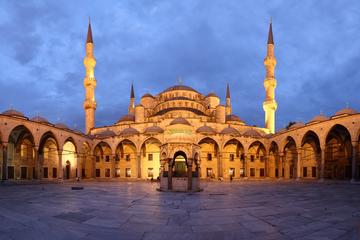
Guided Full Day Highlights of Istanbul private tour
Additional Information:
Ministry of Tourism, Government of Turkey
821 United Nations Plaza, New York, 10017 – Tel: (212) 687-2194
Fax: (212) 599-7568 E-mail: ny@tourismturkey.org
1717 Massachusetts Ave NW, Washington DC 20036 Tel: (202) 612-6800
Fax: (202) 319-7446 E-mail: dc@tourismturkey.org
NOTE:
1) Turkey is a paradise of sun, sea, mountains and lakes that offers the vacationer a complete change from the stress and routine of everyday life. From April to October, the country has an ideal climate that is perfect for relaxing on sandy beaches, touring the rich heritage of the land, or for enjoying the tranquility of mountains and lakes. Shopping is one of the great pleasures of a trip to Turkey, which offers a rich variety of traditional handicraft: Your only difficulty will be in deciding what to choose from the many tempting bargains. Turkish cuisine is known for the richness of flavors that never fail to delight and the coffee served in cafes is famous throughout the world.
2) A passport and visa are required. Passport holders can purchase a 90-day sticker visa at the port of entry for $20 cash if they are traveling to Turkey as tourists. For further information contact the Embassy of the Republic of Turkey at 2525 Massachusetts Avenue, NW, Washington, D.C. 20008, telephone: (202) 612-6700, or the Turkish consulates general in Chicago, Houston, Los Angeles, or New York.
Republic of Turkey Ministry of Culture and Tourism
About the author:
Norman A. Rubin is a former correspondent for the Continental News Service (USA), now retired – busy writing articles and stories for Net sites and magazines worldwide – see ‘Google.com’ under the author’s name for a review of his written work. Contact: normrub2000@gmail.com
Photo credits:
Topkapi Palace interior by Arif Yasa from Pixabay
All other photos are by Norman A. Rubin.




Leave a Reply
You must be logged in to post a comment.